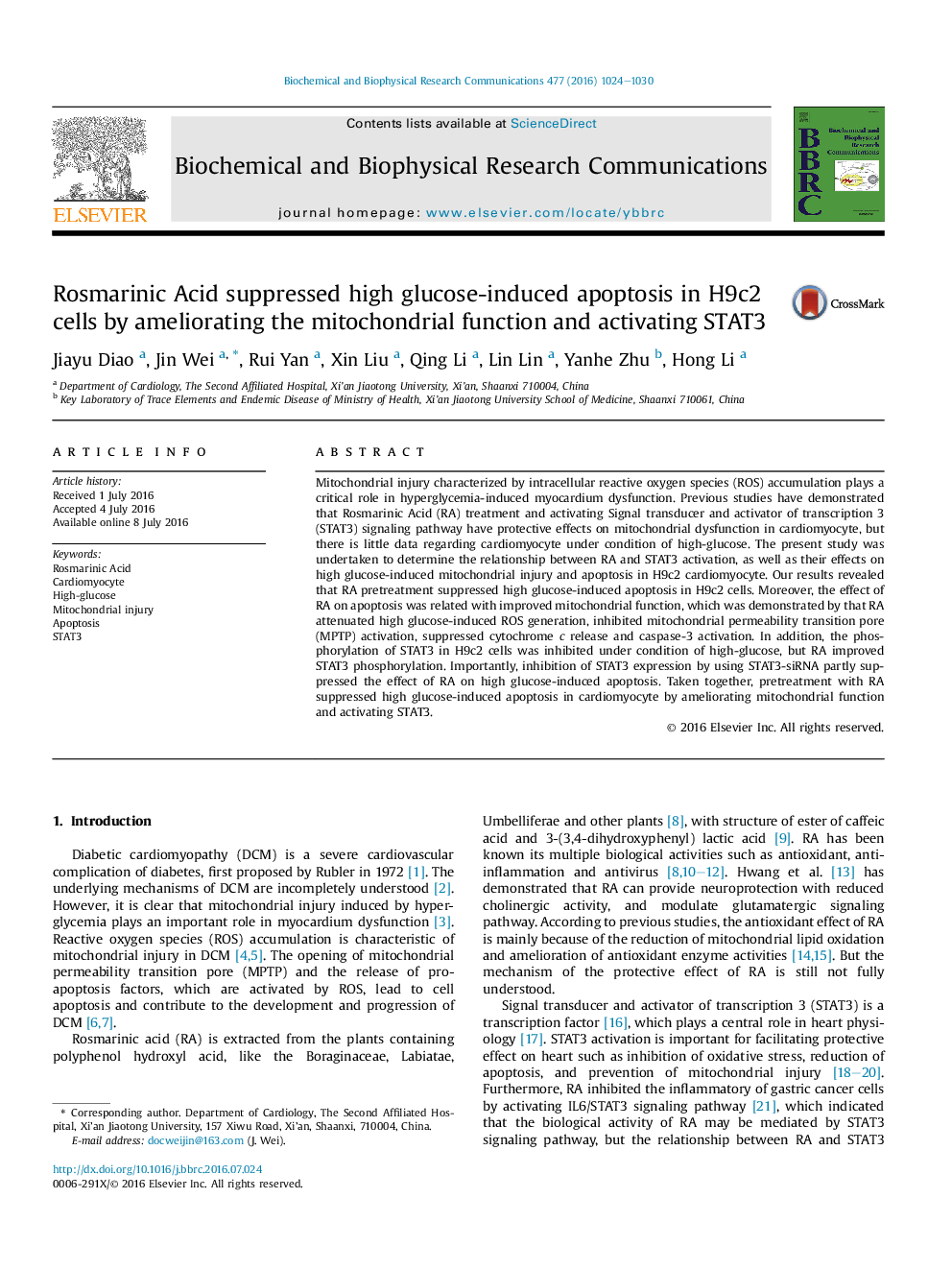| Article ID | Journal | Published Year | Pages | File Type |
|---|---|---|---|---|
| 10747994 | Biochemical and Biophysical Research Communications | 2016 | 7 Pages |
Abstract
Mitochondrial injury characterized by intracellular reactive oxygen species (ROS) accumulation plays a critical role in hyperglycemia-induced myocardium dysfunction. Previous studies have demonstrated that Rosmarinic Acid (RA) treatment and activating Signal transducer and activator of transcription 3 (STAT3) signaling pathway have protective effects on mitochondrial dysfunction in cardiomyocyte, but there is little data regarding cardiomyocyte under condition of high-glucose. The present study was undertaken to determine the relationship between RA and STAT3 activation, as well as their effects on high glucose-induced mitochondrial injury and apoptosis in H9c2 cardiomyocyte. Our results revealed that RA pretreatment suppressed high glucose-induced apoptosis in H9c2 cells. Moreover, the effect of RA on apoptosis was related with improved mitochondrial function, which was demonstrated by that RA attenuated high glucose-induced ROS generation, inhibited mitochondrial permeability transition pore (MPTP) activation, suppressed cytochrome c release and caspase-3 activation. In addition, the phosphorylation of STAT3 in H9c2 cells was inhibited under condition of high-glucose, but RA improved STAT3 phosphorylation. Importantly, inhibition of STAT3 expression by using STAT3-siRNA partly suppressed the effect of RA on high glucose-induced apoptosis. Taken together, pretreatment with RA suppressed high glucose-induced apoptosis in cardiomyocyte by ameliorating mitochondrial function and activating STAT3.
Related Topics
Life Sciences
Biochemistry, Genetics and Molecular Biology
Biochemistry
Authors
Jiayu Diao, Jin Wei, Rui Yan, Xin Liu, Qing Li, Lin Lin, Yanhe Zhu, Hong Li,
